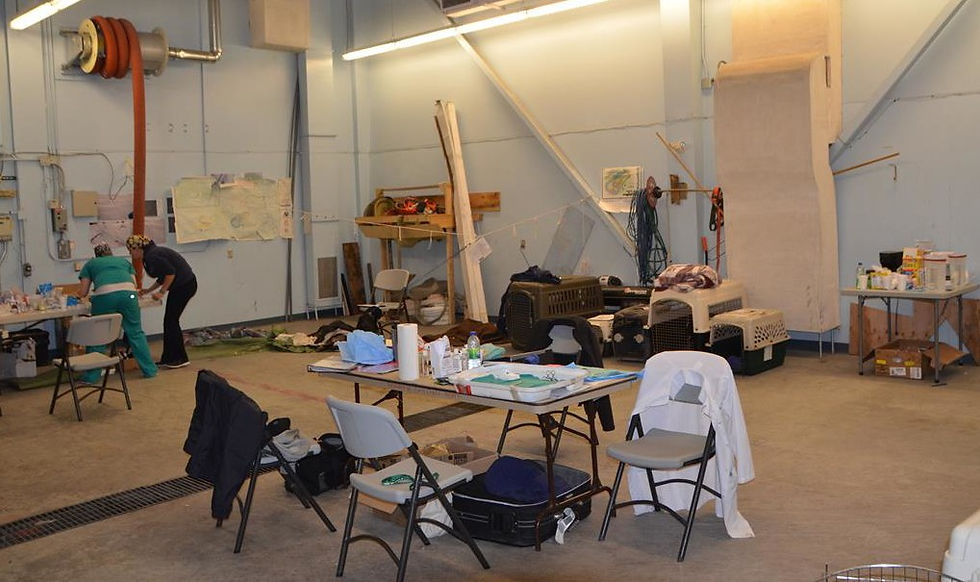Transformation - Jessica Eisnor
- chinookproject
- Nov 30, 2015
- 3 min read
(Jessica Eisnor, AVC 2016, travelled to Natuashish in 2015. The students were asked to submit a piece of reflective writing, about their experience as a veterinarian)
To practice veterinary medicine outside the confines of a structured clinic is a unique and enriching experience. If participating in this amazing project has taught me one thing, it is that you can make a profound difference with minimal materials.
During our brief introduction to surgery as veterinary students thus far, we have been pampered. Whatever is needed is always within reach. There is overhead lighting perfectly positioned in order to maximize visualization of the surgical field. The operating tables are easily adjusted to prevent the surgeon from having to lean over or crouch down to reach the patient on the operating table in front of them. There is a vast assortment of all the surgical instruments required for procedures, along with a few extras just in case. The operating room is pristinely clean, quiet, and free of distractions. There are a handful of specialty surgeons and anesthesiologists on hand to guide us. Standard practices involve meeting patients several days prior to scheduled surgery and running blood work to ensure good health. Monitoring a patient for several days post-operatively to ensure incisions are healing without complication. I could go on and on. The point is - could we be any more fortunate? These are ideal circumstances in which to teach a beginner surgeon how to perform new and stressful procedures.

Fast forward two months to May 2015. Now we students must put our new found surgical knowledge and skills to the test. Only this time, the surrounding environment could not be more different. We are in a different province in a remote community, surrounded by a different culture and interacting with a unique population of animals.
We pull up to the local fire station seated on the back of a pick-up truck, cloud of dust trailing behind us. A firetruck is parked haphazardly outside as the concrete floors are being dried by the wind after a volunteer firefighter on duty graciously mopped in preparation for our arrival. After one quick lap around the facility it is clear: pampering is out of the question.

The next few days quickly pass by in a blur of wagging tails, cold noses, IV catheters and surgical procedures. Surgical tables are propped up with paint cans to reach a better height. Head lamps or hand-held lights are employed to improve visualization of the surgical field. Sparse instrument packs force creativity with surgical techniques. There are five people in the less-than-spacious environment of a storage room performing two surgeries at one time, monitoring anesthesia, and teaching new techniques. There is a room full of patients just next door, arriving, recovering, barking, howling, and crying. It is chaotic, energizing, and incredibly exhilarating!

It is pretty incredible to watch an empty fire station transform into a fully functional veterinary clinic in a matter of hours. A little re-arranging, cleaning, creativity and a lot of zip ties and tape and voila! What is even more impressive is just how well a group of eight people can work together to ensure a clinic runs smoothly and patients are treated and cared for to the highest standards possible. After spending only a short time on this project I have learned one really important thing: you don't have to have access to the latest and greatest technology. You just need to have time and the right group of committed people all working towards a common goal in order to make a positive change.




Comments